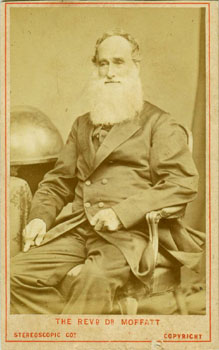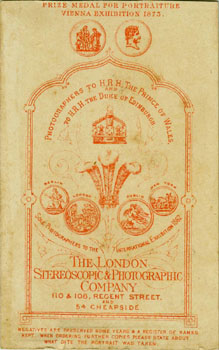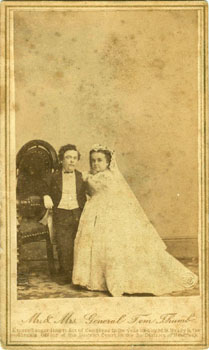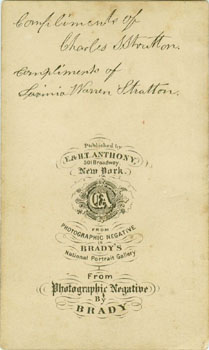
My contributions to the weekly Sepia Saturday theme have suffered a little this summer, mainly due to the run of good weather that we've had, of which I've taken full advantage with plenty of hiking and other outdoors activity, following on from my rather lengthy excursion walking the Camino in northern Spain last year.
I could not resist Alan's image prompt this week, a black and white photograph from the Bergen Public Library's Flickr photostream depicting three classical composers Julius Röntgen, Frants Beyer and Edvard Grieg on an excursion on Mount Løvstakken in June 1900. Another image in the same sequence, and presumably taken on the same day, shows Beyer and Grieg indulging in light refreshments after their exertions.

Roosevelt on Glacier Point, Yosemite Valley, 1903
Stereographic print publ. by Underwood & Underwood
These reminded me very much of one of my favourite photographs which has been reproduced many times, but is shown here in its original format as a stereocard print published by Underwood & Underwood in 1903 (click the image for a larger version). Few of my readers will need to be informed that this was the 26th President of the United States, Theodore Roosevelt (1858-1919) at Glacier Point, Yosemite, with the Yosemite Falls in the background. I haven't yet been able to determine who took the original photograph - and there were quite a number of adventurous glass plate photographers working in the area, right back to 1859 [2] - but I did discover several similar scenes which appear to be part of the same series, and were presumably taken on the same day.

Roosevelt on Glacier Point, Yosemite Valley, 1903
Stereographic print publ. by Keystone View Company
A second pose, very similar to the first but published by Keystone, shows Roosevelt again standing on an overhanding rock at Glacier Point, with the Yosemite Valley and the Yosemite Falls forming a magnificent backdrop to the north-west. The stereophoto is titled, "President Roosevelt's Choicest Recreation - Amid Nature's Grandeur - On Glacier Point, Yosemite, Calif."

Roosevelt on Glacier Point, Yosemite Valley, 1903
Unmounted print, unknown publisher
A third version shows Roosevelt seated, rather than standing, on the overhanging rock, with the photographer facing east and the charcateristic outline of Half Dome just visible at the right hand edge of the view.

Roosevelt and Muir on Glacier Point, Yosemite Valley, 1903
Unmounted stereographic print, unknown publisher
A fourth image, also widely published as a stereophoto, shows Roosevelt and another man - the identity of that man holds the clue to why the President was there, and why this series of images has become so widely known. Much has been written about the relationship between Roosevelt and John Muir, the bearded man to his left, and I don't intend to repeat it here, except to quote some of Roosevelt's own words:
It was my good fortune to know John Muir. He had written me, even before I met him personally, expressing his regret that when Emerson came to see the Yosemite, his (emerson's) friends would not allow him to accept John Muir's invitation to spend two or three days camping with him, so as to see the giant grandeur of the place under surroundings more congenial than those of a hotel piazza or a seat on a coach. I had answered him that if ever I got in his neighborhood I should claim from him the treatment that he had wished to accord Emerson. Later, when as President I visited the Yosemite, John Muir fulfilled the promise he had at that time made to me. He met me with a couple of pack mules, as well as with riding mules for himself and myself, and a first-class packer and cook, and I spent a delightful three days and two nights with him.

Roosevelt's party at the Grizzly Giant, Mariposa Big Tree Grove, 1903
Photograph by Joseph N. LeConte
The first night we camped in a grove of giant sequoias. It was clear weather, and we lay in the open, the enormous cinnamon-colored trunks rising about us like the columns of a vaster and more beautiful cathedral than was ever conceived by any human architect ...

President Roosevelt and party, Inspiration Point, Yosemite Valley
All next day we traveled through the forest. Then a snow-storm came on, and at night we camped on the edge of the Yosemite, under the branches of a magnificent silver fir, and very warm and comfortable we were, and a very good dinner we had before we rolled up in our tarpaulins and blankets for the night ...

Roosevelt and Muir with two Rangers, Yosemite Valley
The following day we went down into the Yosemite and through the valley, camping in the bottom among the timber ... John Muir talked even better than he wrote. His greatest influence was always upon those who were brought into personal contact with him.
Muir's three nights with Roosevelt at Yosemite in May 1903 has been referred to in a rather grandiose fashion as perhaps "the most significant camping trip in conservation history," with some justification. Muir, an ardent conservationist, prolific author and activist, had been visiting and writing about Yosemite for three and a half decades. He was the first to suggest that Yosemite's U-shaped valleys were carved out by glaciers, in stark contrast to the contemporary view of their origin as the result of catastrophic earthquakes. He had befriended naturalist author Ralph Waldo Emerson, was a co-founder and first president of the Sierra Club, an associate of literary naturalist John Burroughs, and was a close friend of influential scientist Joseph LeConte.
"Only by going alone in silence, without baggage, can one truly get into the heart of the wilderness. All other travel is mere dust and hotels and baggage and chatter." – John Muir in a letter to his wife Louie in July 1888
"There! empty your heads of all vanity, and look ... Yes, I pottered around here ten years, and you think you can see it all in four days." - John Muir to John Burroughs in 1909

John Muir on a 1964 U.S. commemorative stamp
Ranger-naturalist Richard J. Hartesveldt wrote, in an article published in Yosemite Nature Notes in 1955:
This unusual meeting of two great conservationists had a strong influence upon the formulation in our government's land and resources policy ... The prelude to this meeting began a few years earlier when forests which had been set aside by Presidents Harrison and Cleveland were endangered by pressure from commercial interests who wanted the Congress to release them from Federal control. To John Muir, through his vivid writings, goes much of the credit for preventing the passage of such legislation.

John Muir, Preservationist
Celebrate the Century U.S. commemmorative stamp, 1998
The President became interested in the conservation attitudes of John Muir by reading Muir's enthusiastic writings. He indicated to the famed naturalist through California Senator Chester Rowell that he desired to make a trip to Yosemite for the express purpose of "talking conservation" with him ... After receiving a personal letter from Roosevelt, [Muir] wrote ... "An influential man from Washington wants to make a trip into the Sierra with me, and I might be able to do some forest good in freely talking around the campfire."
The President arrived dressed for the business at hand in his rough hunting clothes. He and Muir left the main party of dignitaries and slept on the ground at night, once in the snow, which delighted the President. The conversations around their Sierra campfires would probably fill several volumes, since both were prolific talkers. Although we shall never know all that transpired on this memorial outing, there is much evidence of the good which resulted from it.

John Muir featured on the California state quarter, 2005
John Muir was emphatic about the need for legislation to prevent archeological ruins from being destroyed by "pot hunters" and other collectors. The Petrified Forest and the Grand Canyon were foremost among specific areas mentioned. Perhaps it was at this time that the two conceived a workable plan which would vest the President with the necessary power to set apart as national monuments areas deemed nationally significant. The purpose was, of course, to save time when areas were in immediate danger of invasion, and also to circumvent opposition in Congress which might prevent many such areas from being established. The legislation was enacted in 1906 and is known today as the Antiquities Act.

Redwoods at Muir Woods National Monument, November 2013
Image Copyright © Brett Payne
Sadly I didn't have enough time during my recent brief stay in California to visit Yosemite, as it's been on my bucket list far longer than the term has actually been in existence (i.e. 2006). I felt it deserved more than the couple of days I had available, so it will have to wait for another time. I did, however, get a chance for a quick visit to Muir Woods National Monument - declared as such by Roosevelt in 1908, and named after John Muir at the request of the donors, William and Elizabeth Kent - an old-growth coastal redwood forest close to Mount Tamalpais, with my long time friends Bob and Veronique. Thanks, Bob and Vero, next time we'll do Yosemite.
References
Underwood & Underwood (Copyright, 1903) Theodore Roosevelt and John Muir on Glacier Point, Yosemite Valley, California, in 1903, stereograph (unmounted), Library of Congress, Prints and Photographs Online Catalog (PPOC)
The First Yosemite Photographers / Yosemite Photographers In The Early Days ... Incredible Challenges But Amazing Results, including A Thousand Words by Bill and Mary Hood, by undiscovered-yosemite.com.
President Roosevelt and party, Inspiration Point, Yosemite Valley, California, photographic print, Library of Congress, Prints and Photographs Online Catalog (PPOC)
Muir, John (1871) Yosemite Glaciers, New York Tribune, 5 December 1871, reproduced online by the Sierra Club.
Roosevelt, Theodore (1913) In Yosemite with John Muir, from An Autobiography (1913), excerpted from Chapter IX. Outdoors and Indoors, reproduced online by the Sierra Club.
Roosevelt, Theodore (1915) John Muir: An Appreciation, Outlook, vol. 109, pp. 27-28, 16 January 1915, reproduced online by the Sierra Club.
John Muir and John Muir's Influences, by the National Park Service.
John Muir (1838-1914) and Theodore Roosevelt (1858–1919), The National Parks, America's Best Idea, a film by PBS.
Geologic Map of Yosemite Valley, from Geologic Map of Yosemite National Park and Vicinity, California, U.S. Geological Survey Miscellaneous Investigations Series Map I-1874 by N. King Huber, Paul C. Bateman, and Clyde Wahrhaftig, publ. 1989, from the United States Geological Survey.
Sierra Club Historic Photographs, from the Sierra Club William E. Colby Memorial Library.
Barrus, Clara (1920) John Burroughs - Boy And Man, Chapter XVII: Work And Play In Later Years, from The Catskill Archive
Hartesveldt, Richard J. (1955) Roosevelt And Muir - Conservationists, in Yosemite Nature Notes, Vol. XXXIV, No. 11 (PDF from Yosemite Online Library), p.132-136, November 1955, article reproduced by undiscovered-yosemite.com.



















































